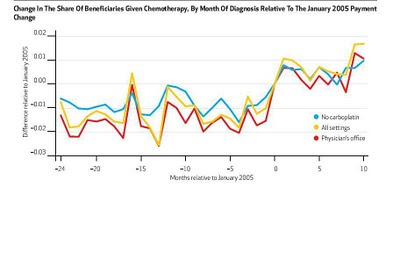Price Waterhouse Cooper published its projections for health care inflation in 2011 last week. PWC projects that medical costs will rise by 9.0% - better than the 9.5% from 2010 – but certainly not a game changer. Further, since inflation is likely to remain low or nonexistent and the GDP is likely to be close to flat, the portion of GDP dedicated to health care will continue to increase.
PWC suggests that the factors that are pushing health care costs down include:
- Move to generic medications
o Lipitor goes generic in 2011. Note that the huge cost savings are generally 18 months after the first generic comes out; but there are some savings even in year one
- Increasing patient cost-share
o This increases price sensitivity, and decreases demand. Above is a summary of the PWC survey on increased cost-shifting to members/patients
- End to COBRA subsidies.
o Members who have recently lost their jobs tend to have very high claims costs, and the much higher unemployment coulpled with the federal subsidy of 2/3 of the cost of COBRA has swollen the number of people on this program.
The factors pushing health care costs up include:
- Medicare cost-shift.
o Medicare underpays hospitals and other providers less than commercial, employer-sponsored plans (although not as badly as it would if the 21% physician fee schedule decrease had not just been reversed for another six months by Congress.) The PPACA (health care reform) decreases rate of increase for hospital fees – so the relative underpayment will increase. While Medicare rates are still substantially higher than payment rates in other countries, they are almost always below
- Provider consolidation.
o Hospitals are merging, and they are acquiring physician practices. There’s been a dramatic shift of cardiologists from private practice to hospital employment over the past year with reimbursement changes, for example. Larger provider groups mean less competition and higher prices
- Health Care Information Technology
o PWC notes that the largest expenses for implementing Healthcare IT are front-loaded in 2011 and 2012 – and suggests that the savings will accrue later.
o The New York Times http://www.nytimes.com/2010/06/27/business/27digi.html?hpw had an article today suggesting that EMRs can allow faster physician bill transmission, which can lead to quicker adjudication (payment), and lower administrative costs.
o It’s also possible that EMRs will lead to better charge capture, which can increase health care costs as long as we stay in a system of fee for service reimbursement.
All told, the PWC estimate of health care cost increase is especially distressing in light of the sour economy.

















